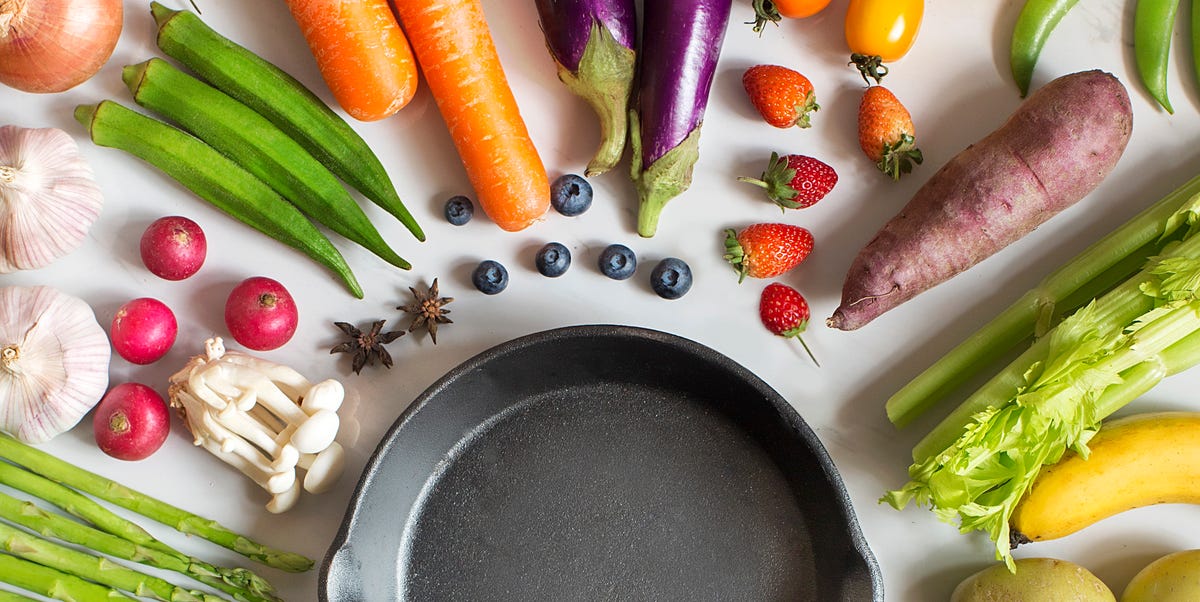
Spare a thought for fibre. While protein has all the star power for its ability to grow your muscles, fibre’s reputation used to be summarised with the flush of a toilet…
But with research pointing to it boosting your microbiome (and feeding your gut bacteria), protecting your heart, balancing your blood-sugar levels and reducing your risk of bowel cancer and type 2 diabetes, the nutrient is on the receiving end of a long-overdue PR push. In fact, word on the street is that fibre is set to be one of 2025’s biggest health and wellness trends.
But sadly, 91% of us aren’t eating enough fibre. This isn’t new data, but it’s a topic that needs more attention. Earlier this year Prof Tim Spector championed this cause, with the British Dietetic Association backing him up – the statistic at the centre of its #FibreFebruary campaign? The average fibre intake in the UK is 18g, well below the RDA of 30g. We are in a fibre crisis.
But let’s, ahem, back up a bit.
What is fibre?
Fibre is a carbohydrate that we don’t digest or absorb because we don’t have the right enzymes.
Unlike other carbs (which are absorbed in the small intestine), fibre passes through the gut, ending up in the large intestine where it’s broken down by gut bacteria. These clever microbes don’t just use fibre for energy, they also unlock beneficial fibre by-products that can positively influence your gut and brain. And the list of reasons to get enough of the rough stuff doesn’t stop there.
Why do we need fibre? Why is fibre important?
Recent studies have linked fibre to helping maintain a healthy body weight. Research shows that as fibre intake increases, weight and body fat tend to reduce. Although the mechanisms aren’t completely clear, fibre takes longer to digest and helps you feel fuller longer.
Yet, despite being dubbed a life-saving nutrient (per 10g increase in fibre, studies show a 10% drop in risk for any cause of death), all age groups in the UK have missed the memo.
Why? Well, there’s us boomeranging back to low-carb diets like a no-hope ex, the relentless rise of ultra-processed foods is many people’s blind spot. But it’s also a food-labelling issue.
Given how hard it can be to determine how much fibre is in your food, that 30g target is, all too often, a currency that only nutritionists understand.
What happens if you don’t eat enough fibre?
Well, put plainly, not eating enough fibre can have detrimental consequences on your gut microbiome and your health. Without fibre, your gut bacteria isn’t able to fight excess inflammation, provide energy, or manage your blood sugar levels or your mood.
Physically, without enough fibre, you’re more likely to be constipated and to feel sluggish and tired.
How can I eat more fibre?
The good news is that getting plenty of fibre in your diet is easier than you think. Hitting that magic three-oh can be achieved via five to eight portions of fruit and veg, including starchy foods in your main meals and prioritising fibre-rich snacks such as seeds, nuts and dried fruit. So, if you focus on getting your five a day and make most of your grains the whole variety, you’ll be well on your way.
3 ways to eat more fibre-rich food
1. Mix in more pulses
Toss a handful of cooked lentils or chickpeas into a salad or curry for an easy fibre boost. Half a tin contains 6-7g.
2. Sprinkle in seed power
Add a handful of chia, flax or mixed seeds to porridge or yoghurt and gain an extra 3-7g of fibre.
3. Upgrade your bread game
Swap out two slices of white bread (2g of fibre) for two slices of wholemeal (5g) or rye bread (7g).
More in Nutrition
Cut through the noise and get practical, expert advice, home workouts, easy nutrition and more direct to your inbox. Sign up to the WOMEN’S HEALTH NEWSLETTER
